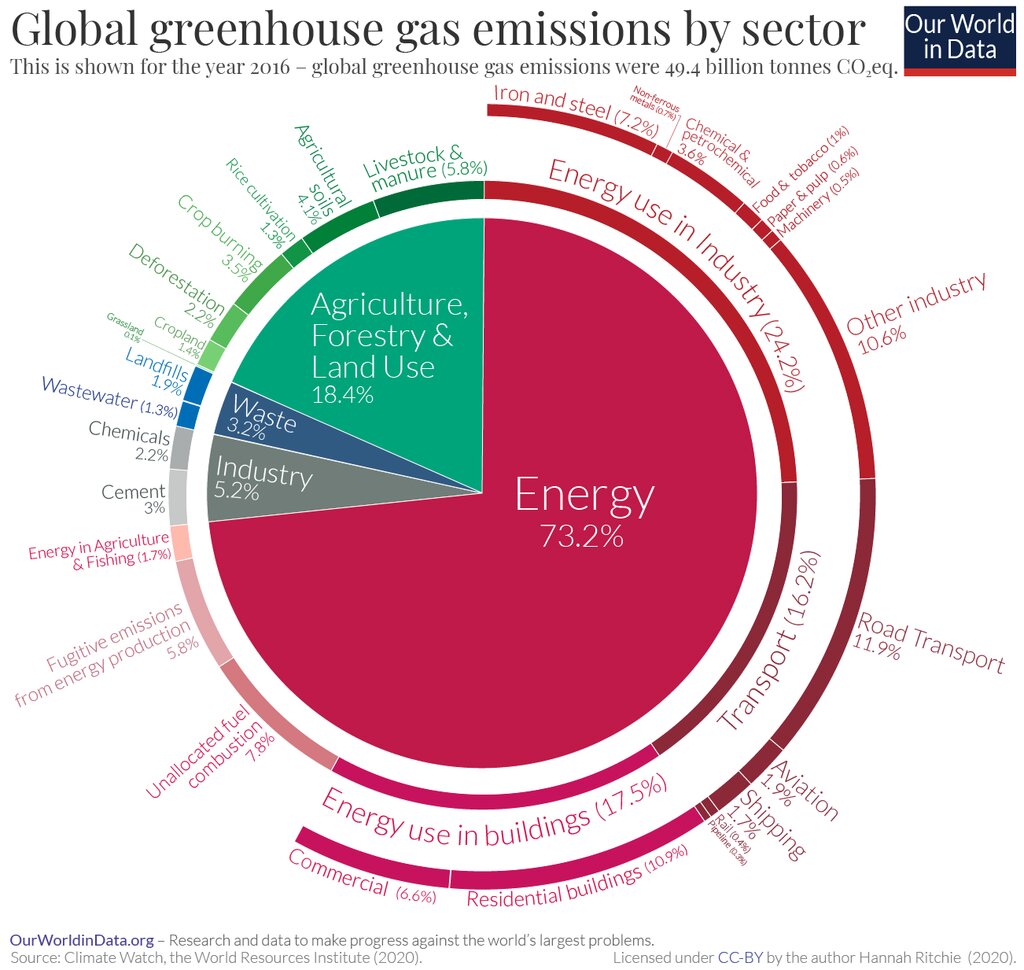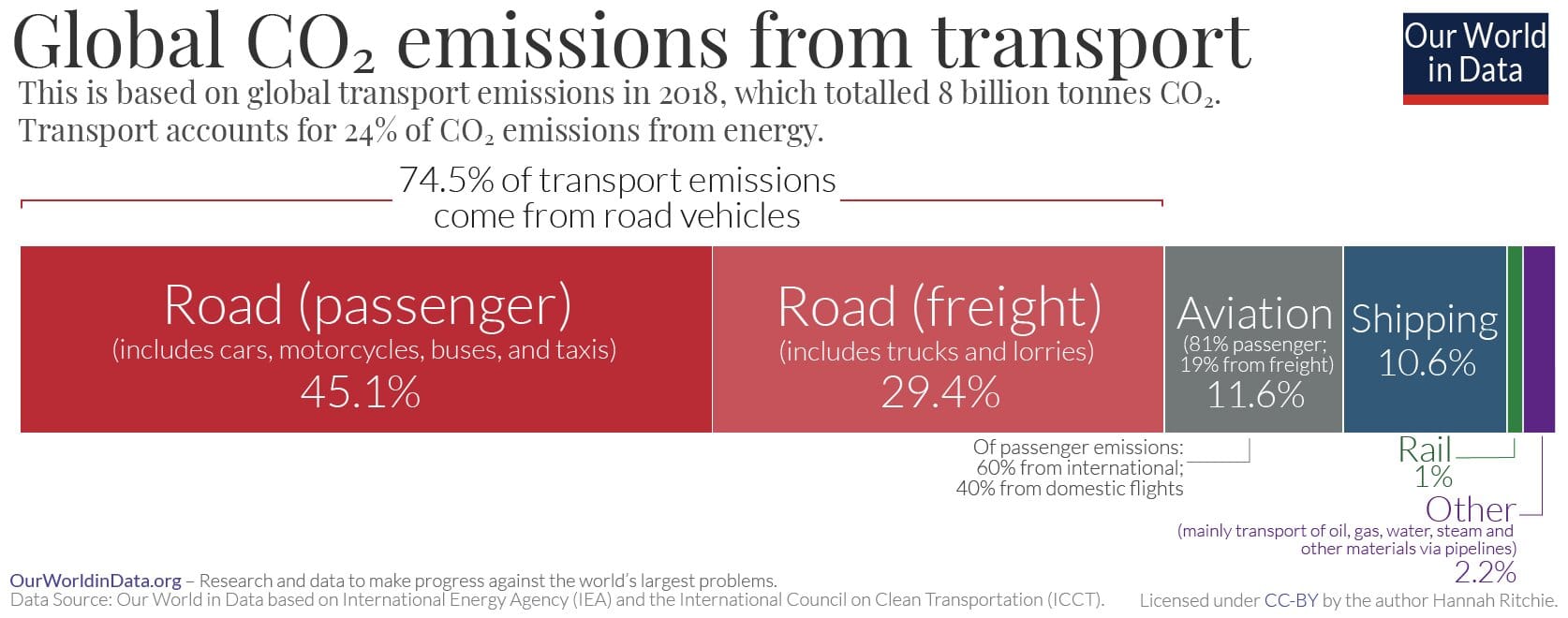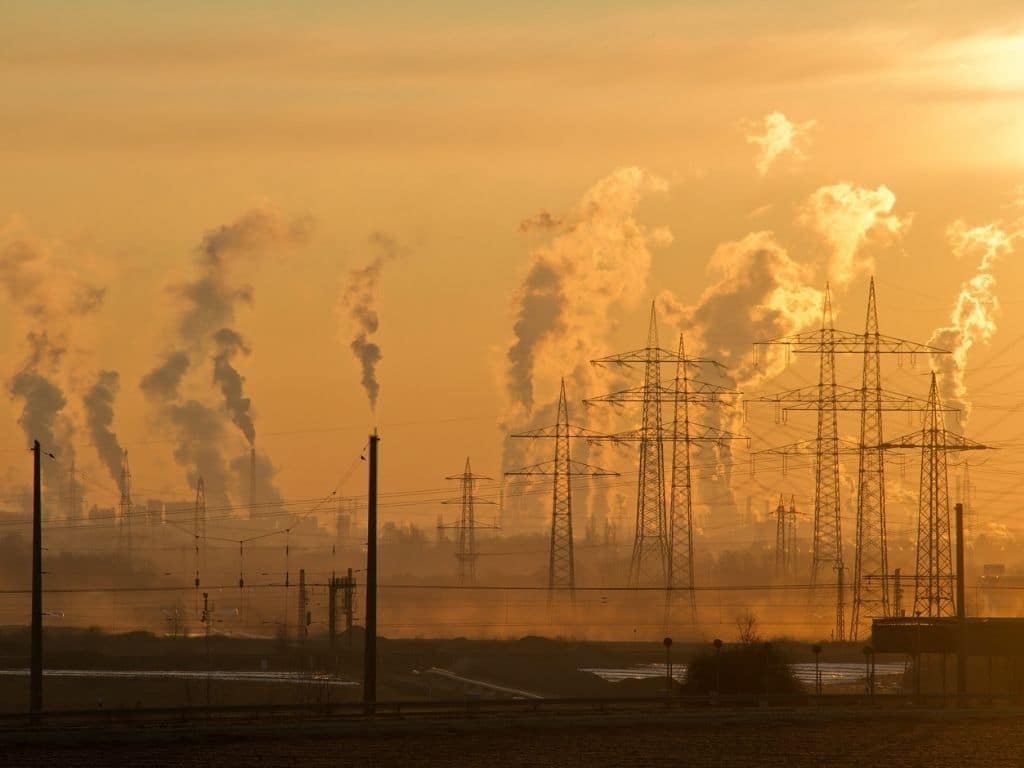Every year, air pollution prematurely kills about seven million people worldwide. It is also one of the biggest threats to human health, increasing the risk of chronic heart and pulmonary diseases, lung cancer, stroke, and respiratory infections. What’s more, air pollution is contributing to the climate crisis and accelerating global warming. Governments urgently need to commit to air pollution prevention in an effort to solve one of the direst environmental problems in the world right now. As we celebrate the International Day of Clean Air for Blue Skies, which every year falls on September 7, we reflect on some of the most promising solutions to air pollution out there.
—
Sometime between 1820 and 1840, the world began transitioning to new manufacturing processes that became known as the Industrial Revolution. While this represented a turning point in the history of technological advancement and moulding the world as we know it today, industrialisation came at a huge cost for the environment and affected worldwide air quality, especially in new, developing urban areas. Even today, the highest levels of air pollution are recorded in cities. Six of the world’s 10 most polluted cities in 2021 were in India, with Bhiwadi topping the list, while neighbouring countries like Pakistan and Bangladesh are also some of the worst affected. In China, despite the huge progress made in recent years, where particulate pollution saw a 29% drop globally, 1.25 million people still die prematurely from pollution-related diseases every year.
The world has made remarkable advancements in air pollution reduction technologies and an increasing number of countries around the world have pledged to end all emissions in the coming decades. We explore the main drivers and effects of air pollution on the environment before diving deep into some of the best strategies for air pollution prevention.
Drivers of Air Pollution
Air pollution refers to the release of chemicals and pollutant particles into the air, mainly through human activities. Among the biggest contributors are fossil fuels. Global demand for oil, natural gas, and coal continues to increase despite calls to end our dependence on these energy sources in order to meet net-zero emissions goals. In 2021, global energy-related emissions reached a staggering 36.3 billion tonnes of CO2, their highest-ever level. 40% of which came from coal – soaring to an all-time high of 15.3 billion tonnes – followed by 10.7 billion tonnes from oil, and 7.5 billion tonnes from natural gas.
Another driver is ozone, a toxic gas that turns into smog – an extremely harmful form of air pollution – when it reaches too close to the ground, significantly reducing visibility. Extreme climate events like dust storms as well as changing weather conditions are also responsible for poisoning the atmosphere. For example, high air pressure and heat waves can create stagnant air where pollutants usually concentrate in large quantities. Extreme heat waves also increase the risks of large-scale wildfires, notorious for releasing more carbon emissions, smog, and pollutants into the air.
Effects of Air Pollution on the Environment
Apart from causing millions of premature deaths and illnesses – especially in low-income countries like South and East Asia – there is growing evidence among the scientific community that air pollution can have detrimental impacts on other aspects of human health and wellbeing – such as their cognitive function. Several studies have found that polluted air often impedes or lowers the cognitive ability of those frequently exposed to it.
But air pollution does not only impact humans. Its environmental effects are also vast and worrying. They range from acid rain – which is extremely harmful to the soil and plants – to birth defects, reproductive failure, and diseases among wildlife animals. Highly polluted rain can also compromise agriculture, as it makes crops more vulnerable to diseases from increased UV radiation caused by ozone depletion.
You might also like: History of Air Pollution: Have We Reached A Point of No Return?
Air Pollution Prevention
While we know much about the causes and effects of air pollution, there is still much to be done in terms of prevention. To understand how governments can tackle the problem, it is useful to have a look at the main sectors contributing to global greenhouse gas emissions. Indeed, the only ways to drastically reduce air pollution are to adopt a wide range of policies that regulate all polluting industries – from energy production to transportation and agriculture – as well as to reflect on broader solutions such as carbon tax systems.

Figure 1: World’s Most Polluting Sectors, 2020
1. Cut Down Emissions from Power Plants
One obvious but effective strategy to cut down emissions is to phase out fossil fuels immediately, yet it has proven to be difficult to implement. As the latest IPCC climate report clearly stated, in the race to reach net-zero emissions, there is no room for any fossil fuel developments. Shifting to other energy sources like nuclear and renewables is a long and complicated process that requires global coordination and collaboration. Yet, not all countries are on board and while some are slowly making the transition, others have no intentions of phasing out fossil fuels.
In the meantime, countries like the US are implementing strategies to hold power plants accountable for their pollution. For example, in March 2022, the Environmental Protection Agency (EPA) unveiled the “Good Neighbor” plan to cut interstate smog pollution from power stations by requiring them to operate their pollution control equipment and keep their daily emissions under a pre-established limit.
2. Decarbonise the Global Transport Sector
Transport accounts for 8 billion tonnes – or approximately one-fifth – of global carbon dioxide emissions. These are expected to grow significantly over the next 30 years as a result of increasing transport demand.

Figure 2: Global CO2 Emissions from Transport, 2018
According to the EPA, there are three methods to reduce greenhouse gas emissions from transportation. The first is to increase the efficiency of vehicle technology. A good start – according to a report by the United Nations – is developing weight reduction and improvements to engines and tires that can make vehicles more fuel-efficient, reduce their reliance on oil, and cut expenses.
One of the most important technologies we have to decarbonise the transport sector is electric vehicles (EV). Significant progress has been made in this industry and costs of batteries have declined by 90% in recent years. Despite EVs being a much better alternative than fossil fuel vehicles, as the latter generate much higher emissions over their lifetime, the electrification of the transportation sector has a dark side. Producing EV batteries requires greater resource extractivism, which has substantial destructive consequences for the environment and local communities, an aspect of this industry that cannot be ignored. Fortunately, EV companies are building a much more sustainable supply chain by improving the efficiency and lifespan of batteries, researching a way to build them using other resources as well as recycling old batteries to reuse raw materials.
But switching to EVs is not the only option we have. We can lower transportation’s carbon footprint by changing how we travel – for example, opting for public transport and car-sharing – as well as how we transport goods around the world. Emissions from the global supply chain have reached historic heights. In 2020, the shipping and return of products within the e-commerce industry alone accounted for 37% of the total GHG emissions, attributing to the unsustainable habits of modern consumers and their appetite for convenience. It is estimated that by 2030, the number of delivery vehicles will increase by 36%, reaching approximately 7.2 million vehicles. This will not only result in an increase of about 6 million tonnes of CO2 emissions, but it will also increase commutes by 21%, as vehicles will take longer to travel due to higher traffic congestion. All things considered, the best way to drastically reduce the impact of the shipping industry is by rethinking the means of transport, for example by prioritising rail and marine vessels over truck drivers.
Emissions can also be reduced by using fuels with a minimal carbon footprint such as biofuels, renewable natural gas, hydrogen as well as sustainable aviation fuel. Lastly, it is the governments’ job to implement tighter fuel and vehicle emission standards. As part of its targets to reduce the net greenhouse gas emissions by 50% in 2030, the US has taken into account many sector-specific reduction pathways. The Biden administration is currently working on incentives for zero-emission personal vehicles, funding for charging infrastructure, and support for research in low carbon, new-generation renewable fuels. Simultaneously, sixteen states including California, New York, and Pennsylvania, are imposing their own pollution limits on cars. Similarly, the European Union is encouraging the production of greener vehicles and it has recently strengthened the CO2 standards for cars and vans as a way to facilitate its phase-out of internal combustion engines.
3. Adopt a More Sustainable Approach to Agriculture
Recent data from the Food and Agriculture Organization (FAO) shows that 31% of human-caused GHG emissions originate from the world’s agri-food systems. From the 16.5 tonnes generated in 2019, the largest share – 7.2 billion tonnes – came from within the farm gate, 5.8 billion tonnes from the supply-chain processes, while 3.5 billion tonnes from land use change.
Thus, efforts to address the exploitation of resources like land and water as well as the promotion of sustainable agriculture are among the most crucial steps in air pollution prevention. A big issue related to soil depletion is the excessive use of fertilisers. Switching to nitrate-based solutions can be one of the easiest fixes in reducing farms’ impact on air pollution. Israel has made incredible technological advances and managed to reduce the overconsumption of water through drip irrigation, a system that delivers water and nutrients directly into the plant’s root through pipes. The technology is now being used in some African countries as well, thanks to funding from the World Bank. Lastly, countries like Australia have found ways to reduce agricultural methane emissions from farming by modifying the diets of livestock.
4. Introduce a Carbon Tax System
A carbon tax is an instrument of environmental cost internalisation, imposed on producers of raw fossil fuels based on the relative carbon content of those fuels. Governments usually set a fixed price that emitting companies must pay for each ton of greenhouse gas emissions they emit.
So far, 27 countries have implemented a carbon tax system as a way to incentivise polluters to lower emissions or switch to more efficient processes and cleaner fuels. At the same time, the carbon tax is a great way to reduce air pollution and greenhouse gases generated from the same human activities and it is thus a good way to hit two birds with one stone.
5. Improving Air Quality While Fighting Climate Change
Last but not least, air pollution can be prevented by tackling climate change. These two phenomena are closely intertwined and neither can be seen exclusively as the cause or the effect. While deteriorating air quality is a consequence of climate change, air pollution also contributes to worsening global warming. That is why the climate crisis cannot be left out of the equation. Effective efforts to tackle climate change would significantly reduce deforestation and wildfires, two of the main sources of air pollution. Air quality and climate change are just one example of causes and effects overlapping. Therefore, the best shot for governments around the world to reduce air pollution is to implement broader policies that aim at tackling all aspects of the looming climate crisis.
You might also like: 15 Most Polluted Cities in the US


















